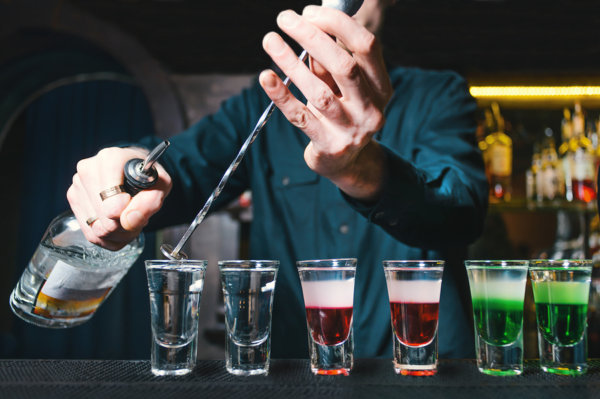
What Is the Lethal Blood Alcohol Level? – According to the University of Notre Dame, a blood alcohol concentration of 0.250-0.399% is considered to be alcohol poisoning, and a loss of consciousness can be expected. At .40%, coma and death due to respiratory arrest are possible.
However, a study from 1990 that examined 175 fatal cases of alcohol poisoning, the mean blood alcohol concentration (BAC) of the decedents was 355 mg/100ml or .355%. Researchers noted that this finding was “less than that quoted in many standard textbooks on forensic medicine.” Moreover, .40% is the figure that is widely considered to be the lethal blood alcohol level.
A more recent study (2015) found that, in 2012, of 1191 emergency department patients on whom BAC testing was performed, a small number (37) had a BAC higher than the allegedly lethal level of 400 mg/100 mL. This number included three patients above 500 mg/100 mL. Of note, no deaths or transfers to ICU were recorded for anyone in this group.
The highest BAC ever recorded was of a Polish man was involved in a car crash—his BAC was measured at 1.48%. Doctors stated he somehow survived this level of intoxication but later died due to his injuries from the car crash.
Another man, from Bulgaria, was taken to the hospital in 2004 following a car accident in which he sustained minor injuries. According to reports, the man, who had a BAC of .914%, appeared to be “fine” and had communicated coherently with doctors.
Indeed, there have been many more reports of people surviving remarkably high blood alcohol levels that would have presumably killed most others. And still, according to the previously mentioned 1990 study, a significant amount of deaths have occurred in the .30% range. This wide range of possibilities is related to the fact that there are a variety of determinants in addition to the sheer volume consumed that influence the outcome of a person who has been drinking excessively.
What influences BAC levels?
1. How Rapidly Alcohol Is Consumed
The faster a person drinks, the more rapidly their peak BAC will increase, and the more quickly he or she will become intoxicated. The liver breaks down alcohol at a rate of around one standard drink per hour (as noted below). When more than one drink per hour is ingested, the liver is unable to keep up, and more alcohol will begin to circulate in the blood until the liver can catch up.
Here is one tragic example: At midnight on November 4, 1998, Bradley McCue’s 21st went with a group of friends to a bar in East Lansing, Michigan to celebrate his 21st birthday the next day. While there, he drank 24 shots of liquor in about 1.5 hours. He made it home alive as his BAC continued to steadily rise, but according to the coroner, he died shortly thereafter at approximately 4:30 a.m. on his birthday with a BAC of .440%

2. Body Weight and Sex (Male or Female)
On average, males have 76 c.c. of blood /kg body weight versus 66 c.c. in females. Males have more blood in which to dilute alcohol due to their larger size, but even males of roughly the same weight as women have slightly more blood because muscle contains more water than fat. Moreover, men have more muscle and less fat on average than women, and will, therefore, have about 10% more water in their bodies.
3. Food Content in Stomach
About 20% of alcohol is absorbed into the bloodstream through the walls of the stomach, while 80% is absorbed through the small intestine. If there is food in the stomach, however, alcohol is absorbed more slowly into the bloodstream. Food in the stomach impedes the absorption of alcohol by preventing it from moving directly to the small intestine, where the majority of alcohol enters the bloodstream.
Fatty foods hinder alcohol absorption moreso than some others because they are more difficult to digest. Carbohydrates are passed through the stomach more rapidly, which causes both the food and alcohol to enter the small intestines faster than high-fat content foods.
4. The Alcohol Content of a Drink
Generally, the higher the alcohol content of a drink, the faster the alcohol will be absorbed into the bloodstream. While one standard drink of hard liquor has about the same alcohol content as a regular beer, when taken as a “shot,” liquor is less diluted and therefore the effects will onset more rapidly.
What Is a Standard Drink?
A standard drink in the USA is equivalent to the following:
- One 12 fl oz. (355 mL) bottle of beer, wine cooler, hard seltzer, etc. at about 5% alcohol content
- One 5 fl oz. (148 mL) glass of wine at about 12% alcohol content
- One shot or one mixed drink containing 1.5 fl. oz. (44 mL) of 80-proof liquor, such as whiskey, vodka, or rum
Nonetheless, the concept of a standard drink is not, by any means, an ideal guideline for estimating an individual’s BAC. This is partly because bartenders sometimes estimate and pour varying amounts of alcohol, and party-goers may be treated to elaborate mixed drinks such as “jungle juice” that contain multiple shots of different types of alcohol. In other words, what appears to be one standard drink may have the alcohol equivalent of more.
Also, some beers and wines have higher alcohol percentages than average. It’s not uncommon to find craft beers well above the 4-5% range, and wine can be found at up to 18%.
5. The Type of Mixer Used
Water and fruit juices combined with alcohol slow the absorption process, while carbonated beverages accelerate it. Carbonated drinks expedite alcohol through the stomach and intestine into the bloodstream, producing a faster rise in BAC.
Signs and Complications of Alcohol Intoxication

Warning signs and complications of acute alcohol intoxication include the following:
- Bluish or pale skin color
- Coma
- Dilation of blood vessels
- Hypertension
- Hypotension
- Hypothermia
- Increased risk of stroke
- Irregular breathing
- Impaired motor skills
- Confusion
- Poor judgment
- Profoundly slow reaction time
- Seizures
- Slurred speech
- Vomiting
- Stupor
- Unresponsiveness
- Coma
It is not necessary for someone to exhibit all the above signs or symptoms before medical help should be sought. A person with alcohol intoxication who is unconscious and cannot be awakened is at risk of dying. Someone who consumes a lethal dose of alcohol will eventually stop breathing, and even if revived, he or she can incur irreversible hypoxic brain damage.
What You Need to Do
If you suspect that someone is experiencing severe alcohol intoxication or poisoning, do not assume they will “sleep it off”—seek medical assistance by calling 911 immediately.
While waiting for help to arrive, do not leave the person alone, and do not attempt to feed them or make them vomit. Alcohol impedes the gag reflex, so someone who is highly intoxicated may choke on their own vomit and die.
If a person is vomiting, try to keep him or her sitting up. If the person must lie down, turn his or her head to the side to help prevent choking. If the person is responsive, try to keep him or her awake to prevent a loss of consciousness.
Treatment for Alcoholism
According to statistics, around 2200 people in the U.S. die from alcohol poisoning each year—that’s about six per day. Compared to deaths by illicit drugs such as heroin, this number is relatively small. However, those who drink to excessive levels are a very high risk of developing an alcohol use disorder (AUD).
AUD (sometimes also referred to as alcoholism or alcohol addiction) is a chronic disease that tends to result in a myriad of other adverse consequences surrounding one’s health and well-being and also dramatically impacts the lives of loved ones.
Recovery By The Sea offers an integrated approach to addiction treatment that includes services essential to the process of recovery, such as psychotherapy, counseling, and group support. We employ caring addiction specialists who provide clients with the knowledge, tools, and support they need to achieve a full recovery and learn to lead more happy and fulfilling lives.
If you or someone you love is suffering from an alcohol use disorder, contact us today to discover how we help individuals free themselves from the chains of addiction!